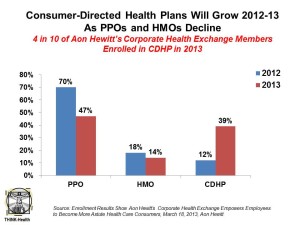 Health consumers, meet a new player in your health care world: the bank.
Health consumers, meet a new player in your health care world: the bank.
Financial services companies will play a growing role in U.S. health care as patients morph into health care consumers responsible for making more money-based decisions about their health care. This shift could make paying for health care just like paying other bills in the consumer retail market. And that’s a new role for health providers – doctors and hospitals – to fill.
The Impact of Growing Patient Financial Responsibility on Healthcare Providers, prepared for Citi Enterprise Payments by Boundary Information Group, discusses what the impact of consumers’ payments in health care will be on health providers.
Citi says, “To succeed, providers will need to provide the kind of price transparency, competitive differentiation and flexible payment models consumers have come to expect from their local retailer. This model will require technologies and staff skills not currently present in today’s doctors’ offices, hospitals and clinics.”
As patients behave more like consumers, they’ll expect more systems in place to help them make decisions and streamline payments, from understanding costs up-front (say, before a physician visit or procedure to avoid “sticker shock” at the point-of-payment) to quickly seeing the balance in their health savings account via a mobile phone app.
Health Populi’s Hot Points: To meet this growing consumer need, doctors and hospitals will need to transform their practices with a view to providing not only health care, but customer service…in the form of retail services. Thus, Citi has launched Money2 for Health, a payment platform to bridge insurers and providers working with patients and payments. Aetna is the first health plan signed up with the Money2 program, with additional health plans expected to join.
The growth of consumer-directed health plans (usually high-deductible plans coupled with a savings account vehicle like a health reimbursement arrangement or health savings account) will force both players in the health care transaction – consumers and providers – into new roles that feel more like retail than health care.
If providers don’t offer convenient payment formats for patients, they’re likely to suffer problems with late payments or non-payments beyond those already challenging the average physician practice or hospital CFO’s accounts receivables department. For health consumers, it’s a matter of understanding just what costs are being charged (best understood ahead of the encounter) so that they can make arrangements on how best to pay their health bill before the moment of truth: checking into the provider’s office when asked for their health plan member ID card.




 I love sharing perspectives on what's shaping the future of health care, and appreciate the opportunity to be collaborating once again with Duke Corporate Education and a global client on 6th May. We'll be addressing some key pillars to consider in scenario planning such as growing consumerism in health care, technology (from AI to telehealth), climate change, and trust -- the key enabler for health engagement or dis-engagement and mis-information. I'm grateful to be affiliated with the corporate education provider
I love sharing perspectives on what's shaping the future of health care, and appreciate the opportunity to be collaborating once again with Duke Corporate Education and a global client on 6th May. We'll be addressing some key pillars to consider in scenario planning such as growing consumerism in health care, technology (from AI to telehealth), climate change, and trust -- the key enabler for health engagement or dis-engagement and mis-information. I'm grateful to be affiliated with the corporate education provider  Thank you FeedSpot for
Thank you FeedSpot for